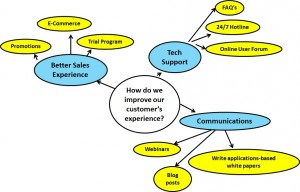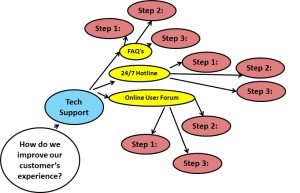Why now
Although this may seem counterintuitive, it is vital to begin customer engagement activities long before you have a product to sell to them. This is especially true when you have an innovative new concept and will potentially be first to market. Failure to engage with your customers early will more often than not lead to, at best, wasting a lot of time and effort working on features that are unimportant to your customers and at worst, launching the wrong product.
The value of a good relationship with your future customers
Customer engagement is not marketing. It is any activity that fosters two-way communication with your customers. This is where you will find out exactly what features of your product will be most important and also who most values them (customer segmentation). The reason that it is critical to begin doing this early is that the insights you gain from your future customers will allow you to more accurately determine the critical product specifications that will delight your customers when you launch.
Some Customer Engagement Tactics:
- Face-to-face meetings
This is the best way to confirm that your product and its feature set is right for your customer. You get the most information this way and non-verbal reactions to your product or feature set proposals are worth the time and effort that this method requires
- Phone feedback
Follow-up phone conversations with customers that you have already met face-to-face. This can be a good way to validate any changes to your product concept that you made based on the feedback you received from your prior prototype
- Social media
Start and maintain a blog to get additional and ongoing feedback. (Be sure that you allow commenting and respond to those comments – remember this is a conversation).
Get started now
Ideally, you will begin engaging with your customers prior to any alpha testing. Start now because the earlier you start the better you will limit the costs and delays of rework. The company leadership should be conducting these and ideally the Founder/President is part of this effort as well.
Picture Credit: © Surkov_vladimir | Stock Free Images & Dreamstime Stock Photos







